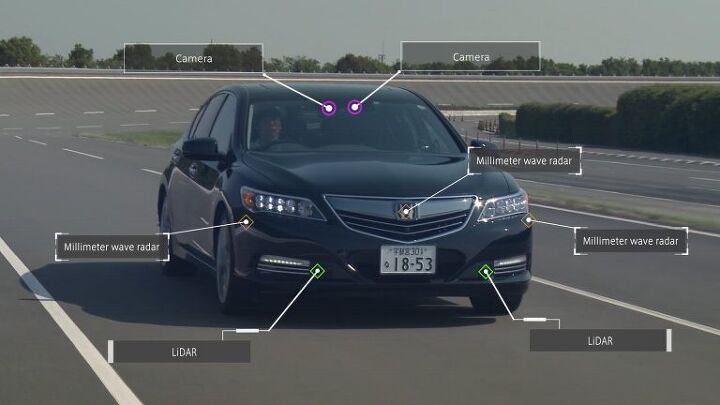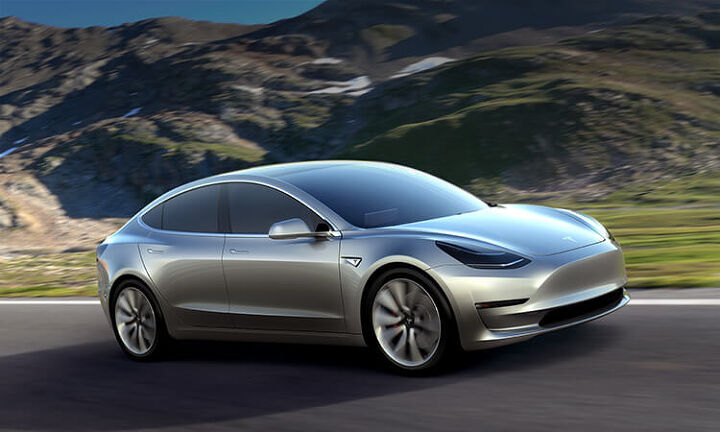#BEVs
Honda Officially Joins the Rest of the World in EV and Autonomous Development
Honda Motor Company finally expressed an interest in developing autonomous cars on Thursday, while also stating its intention to bring two new electric vehicles to market by 2018.
The Japanese automaker has been cautious in making tech-related promises, especially those that relate to self-driving models, even as many of its rivals wear their autonomous development efforts like a badge of honor.
We knew Honda was working on the technology, but any semblance of a goal-oriented timeline was absent prior to this week. As part of its “Vision 2030” strategy, the car manufacturer claims it will coordinate R&D, procurement, and manufacturing to minimize development costs as it branches out into the realm of self-driving and electric vehicles.
EV Sales Surge in California After Chevrolet Bolt Introduction; Hybrids Take a Dive
If the automotive market were a foot, electric vehicles would be the curled-up toe on the outside edge. It doesn’t take up a lot of space, you’re not entirely sure what it’s there for, and some people think it’s weird. Still, it clearly has a purpose to serve and it’s hard to imagine the foot without it. There’s potential in that digit.
Strong Chevrolet Bolt deliveries in California pushed up the state’s EV sales by 91 percent in the first quarter of this year. It may still account for only 2.7 percent of the Golden State’s new vehicles, but it’s still more than many of us expected to see this soon. Sales of the more-affordable, longer-ranged EV seem to suggest the market might begin to gobble up plug-ins as more affordable models with superior range continue to arrive.
2017 NYIAS: Honda Builds the Clarity Into a Family
Honda primarily uses the Clarity to prove its faith in the future of hydrogen-powered vehicles, but it doesn’t sell very many of the fuel-cell equipped cars — and those that are on the road are limited to the California coast. As one of the few hydrogen offerings in North America, the Clarity has broadened its role to encompass any form of alternative fueling. Wednesday at the 2017 New York Auto Show, Honda shed more light on the hydrogen-free EV variant of the Clarity, as well as its new plug-in hybrid.
That ought to boost Clarity sales to previously unfathomable levels. Honda is setting a U.S. target of 75,000 units over the first four years, a quadrupling of the company’s current electrified vehicle output. However, that’s a drop in the bucket compared to its EV sales goal of two-thirds of all light vehicle deliveries by 2030.
Nissan Prepares to Rejoin the Competition With Next Wave of Electric Vehicles
Consumer demand may be the driving force behind automakers shifting assembly line production toward crossover vehicles, but there is another trend that has nothing to do with modern-day sales. Electric vehicles have a small but loyal consumer base and the majority of carmakers seem poised to ensure the next decade caters directly to them — whether it be through pure BEVs or hybridized powertrains.
However, not every manufacturer has its electrified ducks in a row. Despite hitting its mark with the Leaf EV, Nissan has been resting on its laurels since 2010 and hasn’t made the same sort of technological promises that Volkswagen Group or Ford cannot help but keep repeating… over and over again. Nissan’s chief planning officer Philippe Klein even admitted in January that his company’s EV prospects are dim and something needs to be done.
Clearing the Air: Lucid Motors Base Sedan Starts at $52,500, Unless You Still Need 1,000 Horsepower
Lucid Motors’ production EV turned out to be a much more reasonable entry than anyone expected. The media buzz was that LM’s Air would be a super-sedan offering up to 1,000 horsepower and a 400 mile range — a real Tesla killer. With a 1,000 horses and instantaneous torque, it would actually shame just about everything else on the road, regardless of how it was powered. However, as is so often the case with EV startups, the reality is significantly more nuanced than the hype.
That doesn’t mean Lucid can’t be a massive thorn in Tesla’s side, though. Looking over the freshly released details of the Air reveals a highly competitive base model (on paper) and, since this is the base model, there remains room for that ludicrously powerful and extravagantly priced car we were promised.
In the interim, consumers will just have to be satisfied with a much more affordable unit, but it still outdoes the base model Tesla in terms of power, range, and price.
2017 Hyundai Ioniq First Drive Review - Alternatively Conventional, Sublimely Sufficient
At 30,000 feet above Nebraska, a man who could generously be described as severely corpulent had finally reached the level of personal solace required to allow his mass to spill out of seat 27D and into my own. It was another 1,500 miles to New York, and I could already feel the damp warmth of his body begin to encompass my left side as his sweat began seeping through his pants’ cotton-nylon blend and into my dark denim. Hyundai had invited me out for the introductory press event for its new hybrid/EV five-door, the Ioniq, and I desperately wished I was back in California braving unseasonably heavy rains on low rolling resistance tires as some overfed stranger’s lap oozed across my thigh.
I would have given practically anything to be back behind the wheel of one of Hyundai’s demo cars — not because the Ioniq was the pinnacle of automotive excellence, but because, a day earlier, the company claimed the hybrid version could make the entire transcontinental journey for roughly $100. I’d have gladly paid the Benjamin and spent four headache-free days on the road to avoid four of the most emotionally traumatic hours of my life.
While saying that Hyundai’s new green machines are little more than a preferable alternative to being smothered by middle-aged flesh isn’t the highest praise, I can also say that the Ioniq Electric, Hybrid, and Plug-in Hybrid are all superlatively serviceable — surpassing expectations without ever becoming a sensation. This is adequacy at its most acceptable.
There Won't Be a 100D Version of Tesla's Model 3
It appears apprehensions over the driving range of electric vehicles will be sticking around for a few more years.
Tesla initially said its highly anticipated Model 3 would posses a 215 mile per charge capacity in its base trim, encouraging rumors that the BEV would offer optional power packages and extended range. However, Big Daddy Musk tweeted yesterday the Model 3 is incapable of housing the larger batteries found on the Model X and S.
Tesla’s CEO also said the current 100 kWh battery will be as large as the company plans to go on its present passenger vehicles — but did mention larger units would need to be installed on the company’s semi-trailer-trucks and, again, referenced the possibility of an electric pickup truck.






















Recent Comments